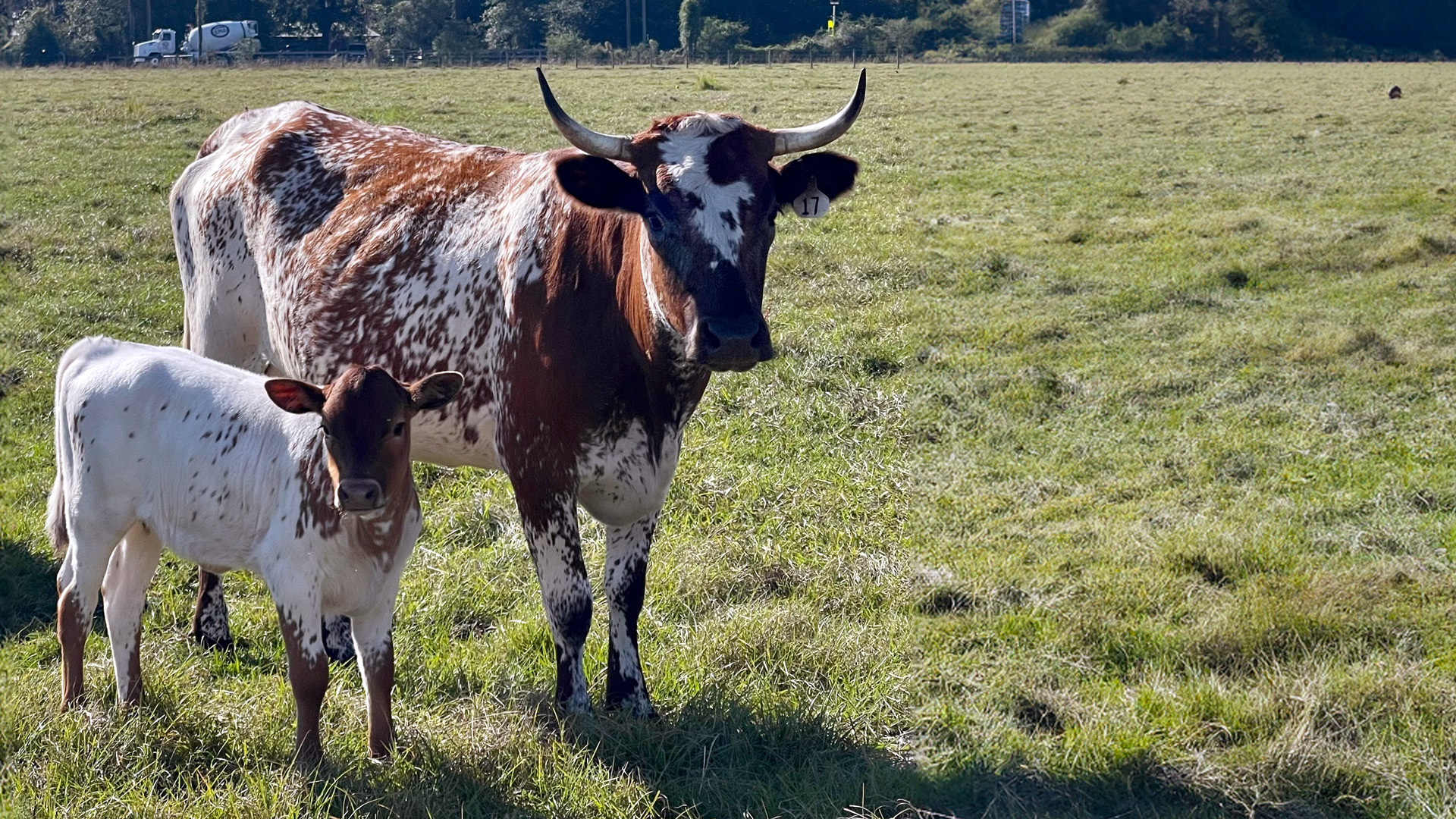
Taking Stock
A North Florida cattleman looks back and wonders, what happens when you can no longer afford to love the thing you love the most?
I used to drive by Allan Roberts’ cattle ranch on Florida 16, just west of Saint Augustine, at least once a week. Raised as I was amongst North Georgia pastures and pines, I barely took notice of the cows grazing the broad expanse of grass broken by live oaks, bordered by stands of pine rising as straight as the oaks were twisted. It was as it was meant to be and, I assumed, always would be. I was in my twenties, fifteen love-clouded minutes from my now wife’s house, and twenty-five years too early to understand that in Florida, history is usually written by someone who wants what you love more than you can afford to love it.
Over two decades later, Allan Roberts lives that reality. Standing in his pasture, within shouting distance of what will be a three-story, air-conditioned storage facility, another ubiquitous American monument to materialism, Roberts gestures at what remains of his cattle herd, now just ten percent of what it once was, and says, “Money in the bank, versus this? There’s no comparison. I can go in that building, see nothing but walls, and can’t wait to get out. But I get out with these cattle and work? And the day is gone before you know it.”
It’s a dying way of life. But it’s a hell of a good way to live.

The beef cattle Allan Roberts raises represent a bloodline that has been in Florida since 1565, when Pedro Menéndez de Aviles came to what is now St. Augustine to establish a Spanish colony. Not only did Menéndez bring 2,000 Spaniards to massacre the French Huguenots who had settled there, but he also brought several hundred cattle from Andalusia. On these shores, the cattle were originally called “Los Criollos.” Creole cattle.
By the time of the American Civil War, an estimated 600,000 wild cattle roamed the Southeast. In the late 1800s, enterprising cattle farmers sought to introduce British and Indian breeds to the Andalusian animals in pursuit of bigger, more heat-tolerant cows, almost eliminating the Andalusians in the process.
Across the South today, the breed is generally called “Pineywoods.” But in northern Florida, especially at Roberts’ First Coast Cattle, they are called “Florida Crackers.” Talking to Roberts, one understands that kind of interbreeding of species was a reasonable effort from a commercial standpoint.
But his Florida Crackers represent his passion for preserving old Florida more than a market force.
“I had modern beef cattle, and used various bulls, from Beefmasters, Black Angus, Brangus, all that, but the last twenty-five years, I’ve only had the Florida Cracker cattle,” Roberts says.
“You eat this ol’ dry Cracker burger, you’ve eaten something that’s good for you, a lot better for you than all that fat, but it just don’t taste as good.”
Crackers are not a big-money species.
“The buyers don’t like them…You put a piece of ground beef on the grill, and normally, you got to turn that thing, or turn the fire down, or it’s going to flare up from the grease coming out,” Roberts explains. “You put a Cracker burger on the grill, it’s going to turn white, and you’re not going to get a flare-up. There’s no fat in it…. Modern cattle are bred for taste and tenderness. They’ve got that marbling in there, and that’s just the best thing. And you eat this ol’ dry Cracker burger, you’ve eaten something that’s good for you, a lot better for you than all that fat, but it just don’t taste as good.” In the wake of that tepid marketing argument, I feel compelled to ask Roberts why he would put his time, money, and passion into a beef cow that isn’t a widely desired commodity. Looking at me from the corner of cobalt blue eyes, he smiles and says, “Well, I like old things.”
Roberts’ Crackers are most definitely old things, scientifically so. As a native of America’s oldest continually occupied city, in 2007 Roberts partnered with then St. Augustine City Archaeologist Carl Halbirt to use the literal layers of archaeological evidence available there, specifically the remains of a cow found in a well shaft, to establish the presence of Florida Cracker cattle at least as far back as 1624. Having established archaeological evidence of the Cracker’s presence, Roberts turned to University of Missouri genetics and animal sciences Professor Jerry Taylor and his then-graduate student, now Associate Professor Jared E. Decker, for genetic proof of his cow’s lineage. Taylor and Decker demonstrated Roberts’ cows “share a very recent ancestor” with the one whose skull was found in a 400-year-old well at 259 St. George Street in St. Augustine.
In a state famously full of transplants, snowbirds, and passers-through—a place known for second acts and second chances, Roberts’ Florida Crackers are a through line connecting the things that were and should be with the things that are and hopefully will remain.
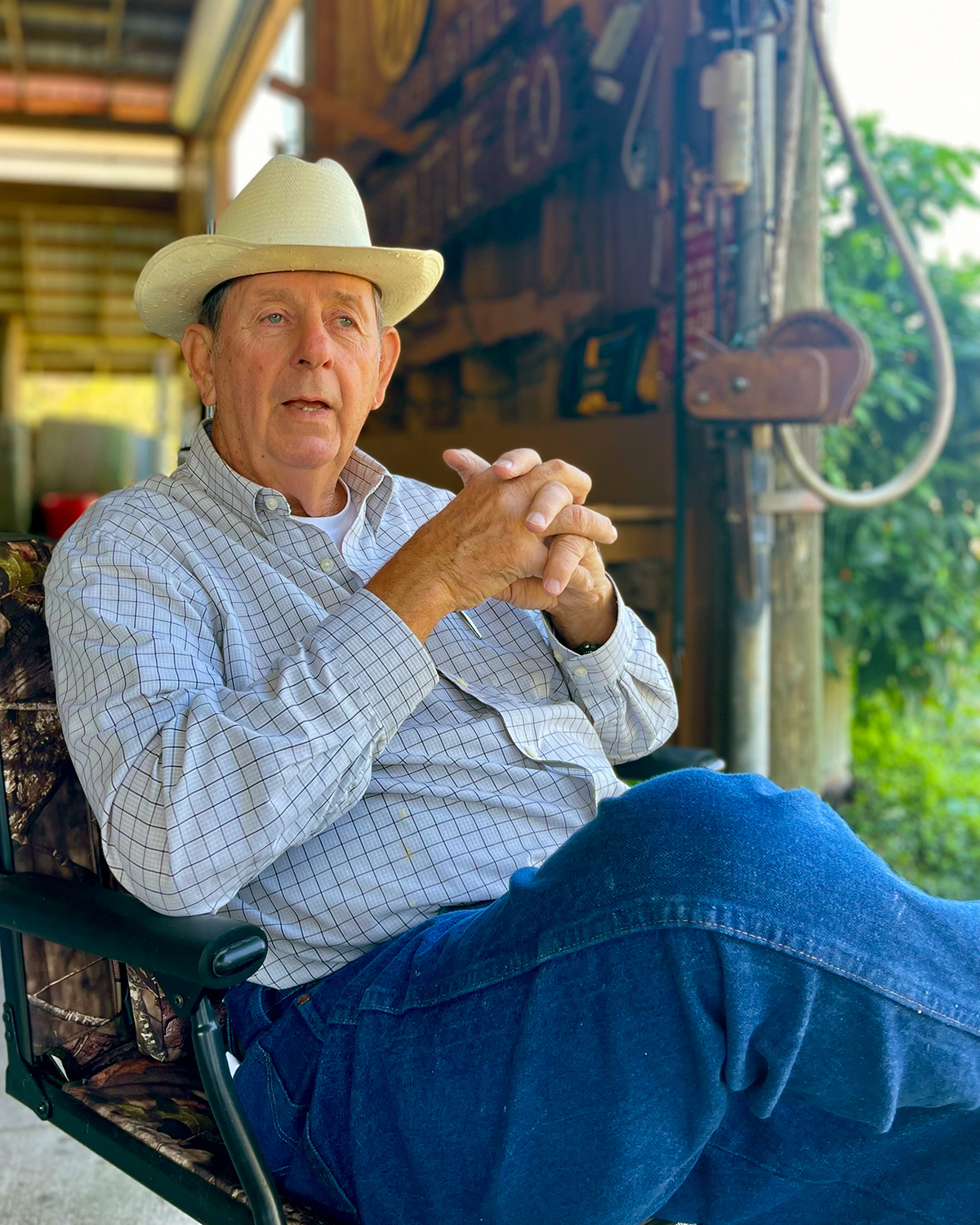
Riding shotgun in Allan Roberts’ jeep, on a road I used to think of as a great place to let the windows down, turn the music up, and celebrate the way Southern rock sounds with the wind in your face, I could only stare open-mouthed at what has become of the countryside. It’s as if Disney metastasized beyond Orlando, bringing a new Epcot experience centered on suburban sameness, every housing development a clone of the next, each named for things that never existed, distinguishable only by square footage and which mega-builder put them there.
Roberts is a veteran of the St. John’s County Commission. He served from 1992 to 1998. He understands “rooftops.”
“Back then, we wanted development, we needed the tax base,” he says. “Now?” He shakes his head. “This is just suburban Jacksonville now.”
I can’t help but think of Peter Matthiessen’s epic novel of Florida, Shadow Country, and the quote from Jacob Riis with which he opens Book One, “Look at a stone cutter hammering away at his rock, perhaps a hundred times without so much a crack showing in it. Yet at the hundred-and-first blow it will split in two, and I know it was not the last blow that did it, but all that had gone before.”
A few miles down from Allan Roberts’ ranch, Florida 16 intersects Pacetti Road, named for people who have lived in St. Augustine since Andreas Pacetti arrived from Naples, Italy, in 1768. Roberts’s mother was a Pacetti.
“There’s still some Pacettis that live down there in the old Pacetti homeplaces,” he says. “I went to school at the same school my mother went to. And believe it or not, we had the same teacher. When Ms. Alma Pacetti turned 100 years old, we gave her a birthday party at my barn. We had almost 500 friends and former students that she taught through her fifty-something years of teaching.”
“My grandaddy had a gas station, sold it to my cousin, sold it to his cousin, sold to a cousin, and they sold it to a developer. Now there’s a Walgreens. Other corner is a CVS. Everywhere you look, it’s the same thing.”
Now, in the place where Roberts and his mother both learned from Alma Pacetti, where “you just walked down to 16, and people that live out this way coming home, they would know you by the time they saw you, and they stopped to get you,” everything seems to be named for nothing, always “at” something. “Summer Bay at Grand Oaks” feeds SUV loads of tanned and visored folks to “The Publix Super Market at the Shoppes at Murabella” and “The Publix at Parkway Village of St. Johns,” mega-grocery stores standing on opposing corners of the intersection like guardians. The people arrive from miles of housing developments, one bleeding into another: Ashley, Lennar, Master Craft, Dream Finders. Roberts looks at it all and tells the story of Florida in two sentences: “My grandaddy had a gas station, sold it to my cousin, sold it to his cousin, sold to a cousin, and they sold it to a developer. Now there’s a Walgreens. Other corner is a CVS. Everywhere you look, it’s the same thing.”
Roberts’ love for an ancient, less marketable cow begins to be more understandable to me.
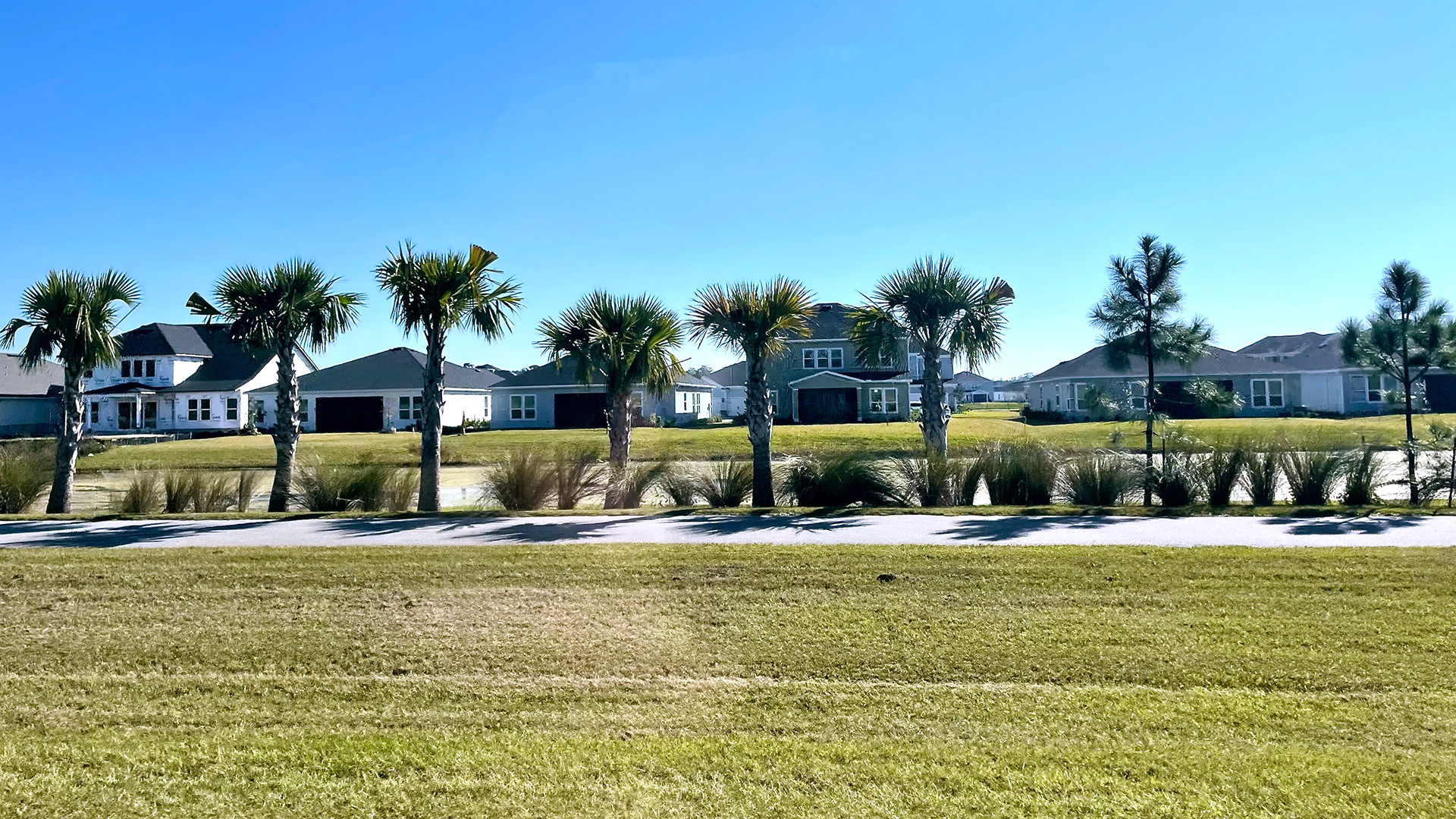
Allan Roberts is a man who sought only to be exactly who he is, to live exactly as he has, to love and worship and provide exactly as he sees fit. But sometimes the world surrounds you and demands you come out with your hands up, and the only way to live is to negotiate the most favorable terms of your surrender.
Cattle ranching in North Florida isn’t an episode of Yellowstone. There aren’t thousands of contiguous acres for cowboys to run huge herds across, with stunning mountain vistas as a backdrop. North Florida cattle ranching means a patchwork of private land, an amalgam of land you own and land you lease. Leased land is only good until someone offers a bigger number to the leaseholder.
“When I started, I put together about 500 head in total,” Roberts says. “At peak, I leased 5,000 to 6,000 acres and had 500 head of brood cows. And that’s about the most I ever had. About 500 cows, scattered all around the community in different places before all the subdivisions. And as the subdivisions started coming fifteen years ago, I’d lose this place, and that place, and then, finally it’s just...this last place here behind me with a thousand homes going in, that finished me off. I don’t lease anymore, there’s none to be had. It’s all sold to developers. So then, I’ve had to downsize to just what land I own, which is enough to maintain about fifty [cows] here.”
Roberts now prefers quality of life over money.
“You get to be seventy-five, you think about leaving something,” he says. “I think the best times are behind us from a property percentage increase perspective.”
It’s a good problem to have, one that has made him wealthy and able to do the good works that matter to him, but it’s still a problem for Allan Roberts, who is determined to keep Crackers on his remaining land.
“As long as I’m able to, I want to [raise cattle],” he says. “To be good at anything, you have to like it.”
“The old cattlemen like me have been disappearing.... It’s a seven-day-a-week job. Kids don’t want that. They want to go to the beach. You have to be a workaholic. But I’m not: I just love cattle.”
There are few left who love it like Roberts does.
“The old cattlemen like me have been disappearing,” he says. “Their offspring didn’t want to raise cattle, to farm. Less work, more money in town, with a city job. Rightfully so, because land values and investment costs to keep farming are making it tougher for families. It’s a seven-day-a-week job. Kids don’t want that. They want to go to the beach. You have to be a workaholic. But I’m not: I just love cattle.”
Particularly the Florida Cracker.
Though he doesn’t say it expressly, one must believe his cattle represent something that hasn’t changed on the landscape he loves. Roberts can speak at length about the history of the First Coast’s Menorcan fishing community and the Calusa Native American tribes. He named his prime bull “Seminole Warrior” because he figured no one would recognize the name of Coacoochee, a Seminole chieftain he deeply admires for the fight he put up for independence. Roberts paid for and built—from trees on his own ranch—an “Old Country Church” for community members who need somewhere to worship, to meet, to marry, or be sent to the great beyond. Of his cattle, he says, “They were supposedly what was brought over when St. Augustine was founded in the 1500s. There used to be plenty of that, that’s all that was in Florida…the old native cattle that could survive, and forage, and knew what to eat, and what time of year to eat it, and where to go to find it, had a built-in immunity to parasites and insects because they’ve been there for so long. They’ve been through storms, and tornadoes, and wildfires, and whatever has ever been in Florida.”
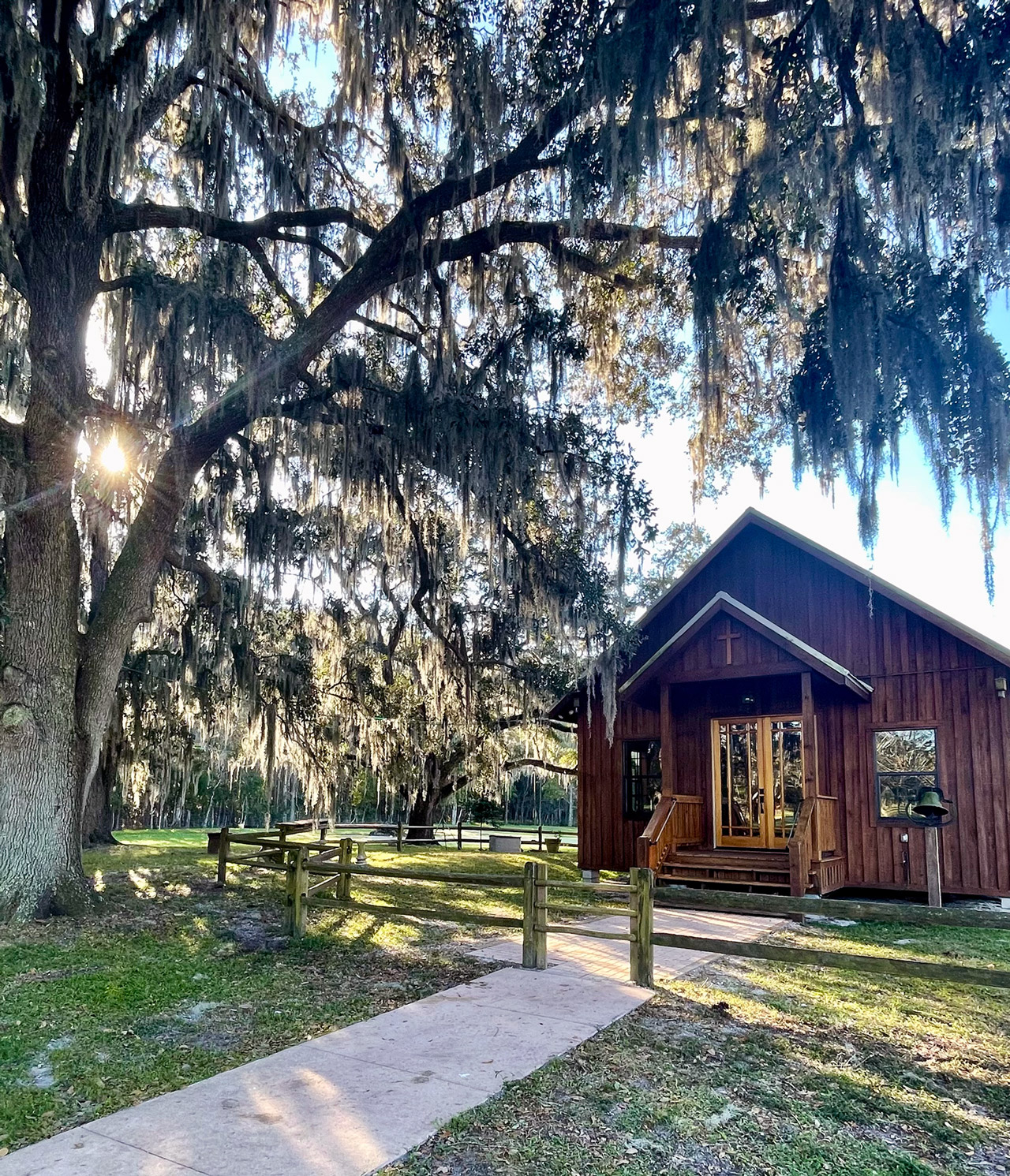
“If you’re willing to trade money for quality of life, there’s plenty of opportunities to do it,” Roberts says before pausing. “But after you do it, you wonder how smart you are. Then you don’t even wonder: you know it was a dumb move.” Those dumb moves render Allan Roberts a study in contradictions. He’s a multimillionaire who doesn’t want to be. He’s a preservationist with less and less to preserve. He’s a cowboy who favors the Native Americans. He’s a cattleman who intentionally raises cows that “don’t grow as fast [and] don’t taste as good.”
Size and taste aside, Roberts’ Florida Cracker cattle offer him hope that something of old Florida will survive the onslaught of beige stucco happening all around him.
“Mine is the only strain that’s been proven to be pure,” he says. “I’m sure there’s others…but mine are the real thing, and the only herd in the United States has been proven to be descendants of the first cattle brought to America.”
“If I had a place to keep more, I would keep more, but there’s no place around here for them.”
To ensure that the breed survives, Roberts sells some cattle every year at the Florida Cracker Cattle Association’s annual sale.
“I sold quite a few this year, and I’ll have to continue selling some because I don’t have a place to keep them,” he says. “If I had a place to keep more, I would keep more, but there’s no place around here for them.”
Sitting in the shade of Roberts’ barn, watching the Spanish moss that hangs from the live oaks brush the roof of the Old Country Church next door, one can’t help but wonder at his dilemma. What do you do when you have everything you always wanted but some irreducible “corporate entity” wants it more? What do you do when all the things that matter to you, the things to which you gave your life, have been rendered into something else? Sometimes you must bend, like a willow in the breeze. Sometimes you must fight, saying, “Here and no further.”
But in North Florida, the fight to preserve pastureland is now unwinnable. But thanks to Roberts’ dedication, the Florida Cracker—the breed that has grazed on it for centuries—has a future.
Russell Worth Parker is a retired United States Marine turned writer. He lives in Wilmington, North Carolina, with his wife and daughter. Worth writes for an array of publications including The New York Times, Garden and Gun Magazine, Salvation South, Backcountry Journal, Shooting Sportsman Magazine, Salt Magazine, and websites such as SOFLETE.com, DieLiving.Com, and several commercial and nonprofit websites.

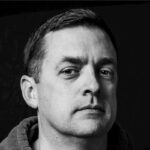
My whole family were born and raised in Orlando, Fla. I’m 65 now and live in Ga. But Florida has been calling me home for a long time now. I was raised in the woods and country of Florida. And old time Floridians are as country as turnip greens. The moss the trees the shade and beautiful places to swim are all part of my paradise home. I’ve ridden horses my whole life so pasture talk is like heaven to me. I know exactly what he is talking about it all disappearing. It’s so sad to me. The people moving to Florida don’t appreciate that part. Everyone sees money in that land. I have and always will see paradise. My paradise home. We’ve bought 3 acres in Fort White. A little town with nothing much there but pasture and hammocks. Just the way I remember and just the way I like it. A beautiful, but sad story.
It’s always great to see Florida’s agriculture get some attention, especially as we see so much of the state’s land being lost to development. However, as a long-time resident in the county where Mr. Roberts’ ranch is located (which is St. Johns, not St. John’s as mentioned in the story), I have witnessed the role county commissioners have played in its reshaping. This story really minimizes the drastic impact of the decision made by Mr. Roberts and the other commissioners at the time when they decided they (we?) needed more of a tax base – “Back then, we wanted development, we needed the tax base,” he says. Is he surprised now that his farmland is being encroached upon by subdivisions? That Publix Super Market at the Shoppes at Murabella mentioned in the story? It is located where Sunshine Farms used to be, with a farmstand that sold local produce grown right there (and where my children first saw Brussels sprouts on the stalk years ago). How ironic that the place where “shopping is a pleasure” has taken over the land where food used to be grown. Yes, it’s fine to lament the loss of our agricultural heritage, but please don’t make Mr. Roberts out to be a victim of the overdevelopment of Florida without understanding how significant his actions as a commissioner were in causing the run on local farmland over the past 25 years.
“on a road I used to think of as a great place to let the windows down, turn the music up, and celebrate the way Southern rock sounds with the wind in your face, I could only stare open-mouthed at what has become of the countryside. It’s as if Disney metastasized beyond Orlando, bringing a new Epcot experience centered on suburban sameness, every housing development a clone of the next, each named for things that never existed”
Perfect.
But this unwinnable fights are the only ones worth much. It’s not about the winning or the losing. It’s about the doing
WLM